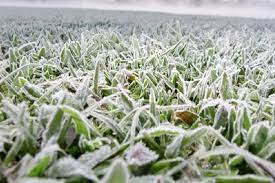Those in the coffee industry will know of the recent devastating freak frost in Brazil that has wiped out coffee crops from some of the largest coffee producing regions in Brazil.
At Redber, we are proud to sell some stunning Brazilian coffees, and over the recent weeks have had conversations with some of our farmers in Brazil to try and understand how this affects their farms, our supply and prices.
We wanted to share this with you, as while the media have reported a small amount of what’s happened, the affects of this frost will cause global prices to increase and shortages of quality Brazilian coffee.
On 1 July, a light frost was reported in some Brazilian coffee-producing areas – a normal occurrence from June to August in the southern parts of the country.
In the early hours of 20th July, an unforeseen, hard frost hit the same regions again. Average temperatures in Minas Gerais, a major coffee producing region in Brazil, fell as low as -1.2°C causing disastrous, and destructive damage to the coffee plant crops.
This intense anomaly swept the country, settling in the regions and states that produce the substantial volumes of coffee. The most heavily impacted regions were the states of São Paulo and Minas Gerais – the two largest coffee-producing states in Brazil.

According to reports by the Brazilian government’s agriculture department, “70% of all Brazilian coffee has already been harvested for the 2021/22 crop year. However, reports of estimated production losses are continuously rising. Around the world, market analysts and coffee traders are suggesting this could be the worst frost since 1994 and stating that there may be repercussions for the global coffee market for as long as four years.”
Graham Jones is our founder here at Redber Coffee in Guildford, UK. “Frost has been happening for hundreds of years,” he says. “The last significant frost in Brazil at this magnitude was in 1994, previous of that was in the 1970s. Some level of frost occurs every year in Brazil in these regions, it’s part of the climate, but it’s normally in low-lying areas in valleys or places where growing coffee is harder to achieve. This kind of “freak” frost seems to happen every 15 to 30 years.”
Frost forms when an outside surface cools past the dew point. The dew point is the point where the air gets so cold, the water vapor in the atmosphere turns into liquid. Frost usually forms at night when the air temperature is cooler.
Two types of frost can occur: white frosts and black frosts. White frosts cause visible ice crystals to appear on leaves and plants but may not cause permanent damage.
However, black frosts occur when temperatures drop below 0°C with little humidity. Instead of causing moisture or water to freeze, plant leaves turn brown or black because of “frost burn”, causing irreversible damage.
“For adolescent coffee plants that are not yet producing cherries, the frost will kill the entire plant,” Graham says. “We are speaking to our famers in Brazil regularly, and at present, “reasonable” estimates claim that anywhere from 2.5 to 5.5 million bags have been lost. Some of our farmers have never seen a frost like this, have lost up to 80% of their coffee crop and most have reported damage without the presence of ice.
We are looking at estimates for next year, with most farmers saying that the harvest for 2022 will only be 50%. The farmers are filled with anguish and despair because there isn’t a solution to the situation. Severely affected farms are having to start again by digging out their coffee trees. Farmers are looking to install irrigation system overnight to protect the plants from further frost.

INCREASING COFFEE PRICES
Brazil is the world’s largest coffee producer. Therefore, Graham says that Brazilian coffee production significantly affects prices for the global market.
“The market trades Brazil’s supply and demand more than any other country, because it’s such a significant producer of coffee,” he says.
Any impact on these coffee harvests has huge implications on the rest of the global coffee market. In 1994, a similar frost caused coffee prices to reach a record high £5.12/kg.
We’ve been watching the UK coffee prices closely and with great interest. After severe frosts through the last few weeks in Brazil, the coffee price closed on Monday, 26 July 2021 above UK £2/Kg – the highest figure since October 2014.
“The frost is causing arabica prices to increase tenfold across the world, because this is an off-year,” Graham says. “Many people don’t know that earlier this year (2021) there was a drought in Brazil, in these same areas, meaning there has been a drop in production this year already”
Following the frosts, some reports are claiming prices may even rise to £5/kg once the full extent of the damage is assessed.
But this isn’t the only reason that prices have increased in the last year and a half. Over the last 18 months, shipping container shortages, theCovid-19 pandemic, and protest blockades in Colombia have also contributed to rising coffee prices.
There has even been speculation that because of a lack of available technical assistance through 2020, crop yields have been predicted to fall globally, which would likely cause price increases too.
There are already reports that farmers around the world are sacrificing quality and selling their crop “early” to capitalise on the high market price. In Colombia, some producers are selling coffee at 15% moisture; others are simply pulping the coffee and delivering it “wet” for the same price they would have received last year.
HOW WILL FROST AFFECT THE GLOBAL COFFEE MARKET?
With more frost expected towards the end of this week, the extent of the damage remains to be seen. In areas such as Apucarana and Pinhalão, in Paraná, the chances of the same kind of frost occurring remains high – 100% likely, according to some sources.
Graham says: “If the frost is really severe, it will have implications for many years. If it’s less severe, it will still only affect at least the 2022/23 season. Roasters and retailers are already suffering because of Covid-19, so price increases due to frost damage may be a chance to increase prices and offset lost revenue. We may see some Brazilian co-operatives go under, and for roasters, prices will go up. “
We have already seen reports of major coffee brands such as Tchibo and UCC Coffee already increasing prices of their coffee, as future prices have increased by 30% since the start of August. As the extent of the frost damage continues to be assessed, smaller-scale roasters and retailers may be forced to also raise their prices.
Conclusively, history has taught us that frosts in Brazil have had a significant impact on the global coffee market. For example, in 1975, a notorious black frost in Brazil caused global prices to rise by 100% in less than a year. With more frost expected this weekend, it’s still too early to discuss what precisely this means for the global coffee market. One thing is for sure, however – the full, detailed extent of this severe and unpredictable frost remains to be seen.

